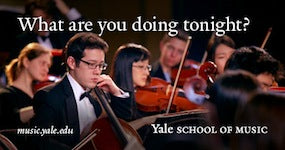Placing Literature, which announced itself to the public during New Haven’s International Festival of Arts & Ideas this past summer, provides a novel service. It allows you to take scenes from fictional works set in real-world places and plot them, with short contextual descriptions, on a digital map of that real world, for the rest of us to see.
Maybe you’re reading the New Haven Free Library’s copy of The Wedding of the Two-Headed Woman by Alice Mattison, when, on page 210, the action moves to Koffee? at Audubon and Whitney—“usually full of students staring at nothing, then typing on laptops, then staring again,” according to Daisy Andalusia, the book’s cynical, sharp-tongued heroine. It’s the work of minutes to get over to your laptop, log in to the Placing Literature website (all you need is a Google account) and add the scene.
You can’t actually add that one from Two-Headed Woman, because someone else already has. But you get the point. The act of reading begs us to imagine the people and places we’re reading about, and while Placing Literature can’t bring fictional characters to life, it can bring us to the places those characters have been.
sponsored by
Of course, there’s always the chance that the real-world setting might not match the one an author conjured in your head. Even so, it can give you insight into how a place has changed in the time between the author’s writing and your visiting. Or it can make you wonder how adept the writer is at capturing the real thing. Or it can have you considering whether s/he has any obligation at all to faithfully reproduce a real place in its fictional stand-in.
Whatever the case, Placing Literature prompts us to connect with a text and its author on deeper levels. For novelist Andrew Bardin Williams, a New Haven resident and one of Placing Literature’s co-founders (along with his sister-in-law Kathleen Williams, a PhD-candidate geographer), this documentation of place and scene offers the realization that the places depicted in the literature we love also carry weight and meaning in the real world.
Williams talks of Katharine Weber’s novel, True Confections, a “story of love, betrayal and chocolate,” according to the dust jacket. A few years ago, Weber, a Bethany resident, was kicking around ideas for her next novel when she drove past the Bigelow building on River Street in Fair Haven, which used to house a steam-boiler and cupola furnace factory. The building struck Weber strongly enough to serve as the model for Zip’s Candies factory, the primary setting in the book. As Weber told the New Haven Independent in 2010, “I can easily imagine the hive of activity that was in the building. It’s built to make things. You hear the echo of people coming to work with their lunch buckets.”
sponsored by

It’s a testament to how much place matters for authors, and Placing Literature may prove the point the other way, for readers. Initially, Andrew and Kathleen expected the project to be small, mapping out scenes from just three locations: New Haven, CT; Duluth, Minnesota; and San Francisco, CA. Those three were chosen because of the pair’s familiarity with them—Andrew lived in San Francisco and currently resides in East Rock, and Kathleen spends a lot of time in Duluth—and because of the cities’ east coast-midwest-west coast cultural and geographic symmetry.
When Placing Literature was revealed at a panel moderated by The New York Times columnist Carl Zimmer at the Arts and Ideas Festival, however, the response was global—and it was overwhelming. Zimmer tweeted out a link to his 200,000-plus followers, and Placing Literature’s website was deluged with traffic from all over. That inspired the Williamses to de-emphasize any particular locales, and to enlist software engineer Steven Young to help improve the site’s functionality—like adding the “Author Spotlight” feature, in which published fiction writers map out their own books and contribute essays to the Placing Literature blog about their particular uses of place in writing.
Andrew, Kathleen and Steven are currently brainstorming ways to make Placing Literature a more flexible tool, one that could be used to create walking tours of literary haunts in places across the globe, perhaps. Site users are already finding creative ways to use the site—for example, a Russian academic is using Placing Literature exclusively for a research project in which he is mapping out places across a wide swath of Russian novels.
Andrew can envision a world in which Placing Literature is integrated into e-reading software as a clickable button, allowing readers to seamlessly and immediately map the places they come across. For now, more advanced user features include the ability to check in to places listed on the map, and to connect easily to book reviews for a given map entry.
“We can’t even imagine what people are going to be able to do with this data,” Williams says. “We haven’t even scratched the surface yet.”
Written by Jake Goldman. Image depicts text from The Wedding of the Two-Headed Woman by Alice Mattison.









